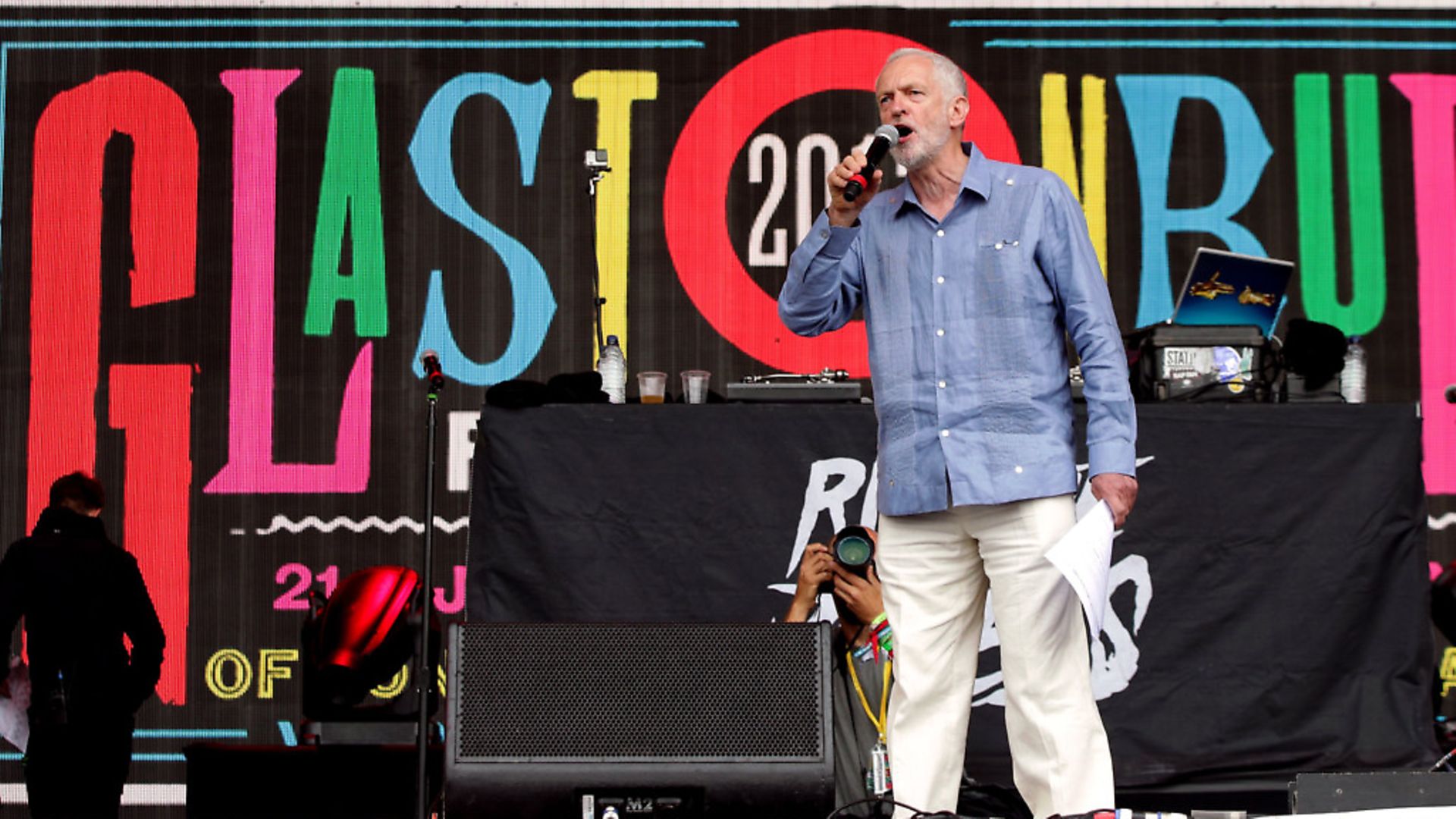
We chart the rise of Corbyn from Labour leadership candidate to pulling in the crowds at Glastonbury Festival
June 2015
Jeremy Corbyn secures a spot on the ballot paper to find a replacement for Ed Miliband as Labour leader just two minutes before the deadline closes. He reaches the threshold of nominations from MP thanks to the support of several colleagues who, while not necessarily backing him for the top job, wanted to ensure as wide a range of candidates as possible
September 2015
After a barnstorming campaign Corbyn wins the leadership with 59.5% of the vote. He is helped by a huge surge in new party members and supporters who paid £3 to take part in the vote, leading to a near-tripling of those eligible to about 550,000 people. However, the national mood seems more sceptical. A survey shows he is the first new opposition leader to have a negative rating since records began in the 1950s. The announcement of his first shadow cabinet is delayed by a large number of Labour figures announcing they would not serve
January 2016
A shadow cabinet reshuffle, including the sacking of shadow Europe minister Pat McFadden, prompts the resignation of Labour MPs from the party’s front bench
June 2016
Corbyn campaigns for Remain during the referendum but his efforts are criticised as lacklustre. Asked to gauge his support for the EU, he puts it at seven and a half out of ten and many have speculated that he may actually have voted for Brexit. In the aftermath of the vote, he sacks Hilary Benn. More than two dozen members resign over the following days and a no-confidence vote is supported by 172 Labour MPs, against 40 supporting Corbyn
July 2016
Angela Eagle and Owen Smith announce their intention to stand for Labour leader. The party’s National Executive Committee decide that, as incumbent, Corbyn should be automatically included on the ballot. Eagle later pulls out to allow Smith a head-to-head challenge
August 2016
Corbyn is ridiculed over the ‘traingate’ row, which saw him filmed sitting on the floor in a train, saying it is completely ‘ram-packed’. CCTV footage later emerges showing there were plenty of seats
September 2016
Corbyn triumphs over Smith, increasing his share of the vote from 59.5% to 61.8%. He wins a majority in every category, with the support of 59% of members, 70% of registered supporters and 60% of trades union affiliates
February 2017
Polling data puts Corbyn’s support at lower than Michael Foot’s at the same stage of his leadership, and shows him to be well behind Theresa May in personal popularity. Even among Labour voters, more are dissatisfied with Corbyn (50%) than satisfied with him (41%)
June 2017
After an invigorated campaign, Labour confound all expectations in the snap election, with an increase of 30 seats and 9.5% in vote share – more than any of the party’s leaders since 1945 – thwarting May’s efforts to increase her majority. Corbyn speaks to fans at Glastonbury, apparently attracting the biggest audience since the Rolling Stones in 2013
Warning: Illegal string offset 'link_id' in /mnt/storage/stage/www/wp-includes/bookmark.php on line 357
Notice: Trying to get property 'link_id' of non-object in /mnt/storage/stage/www/wp-includes/bookmark.php on line 37






